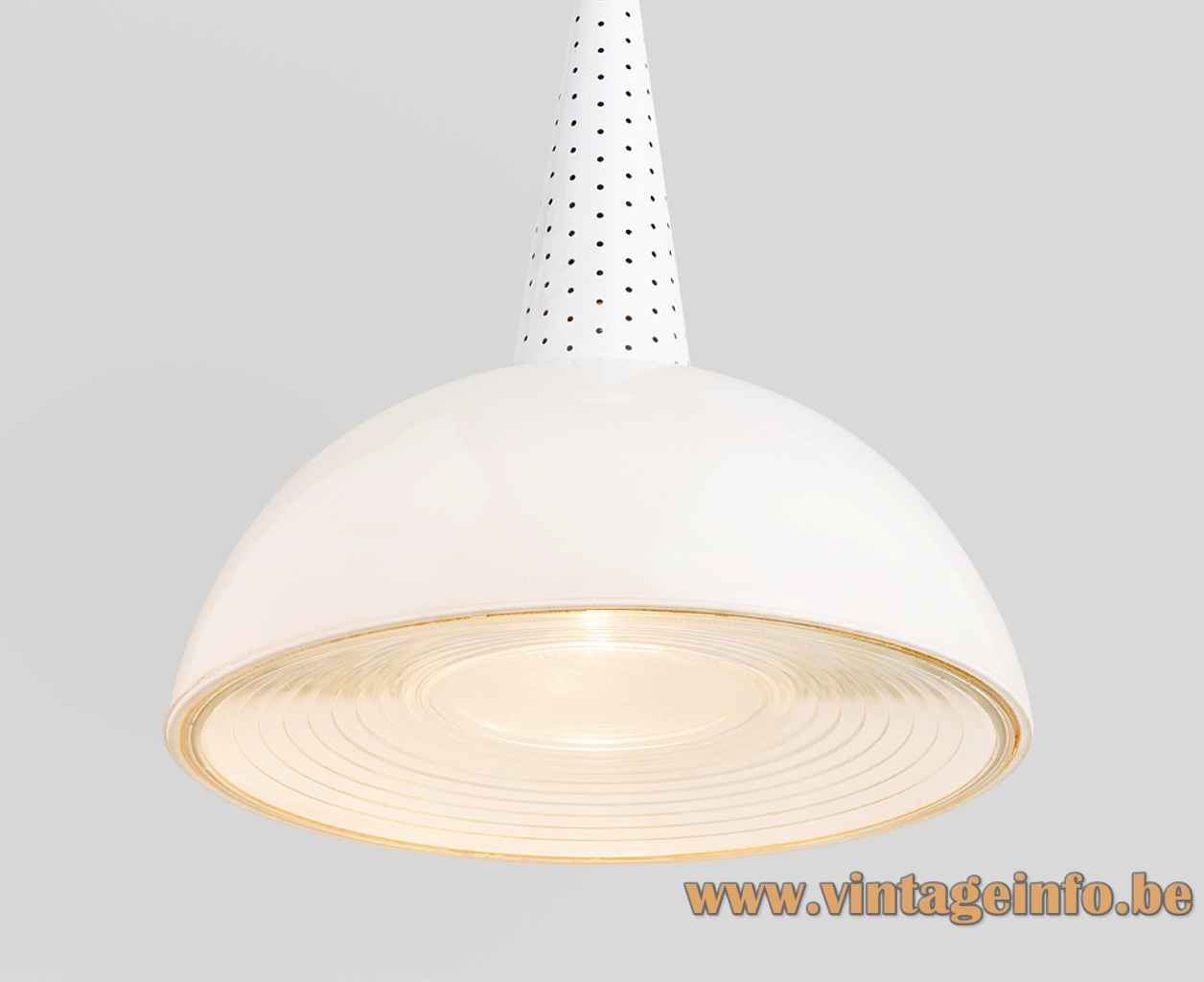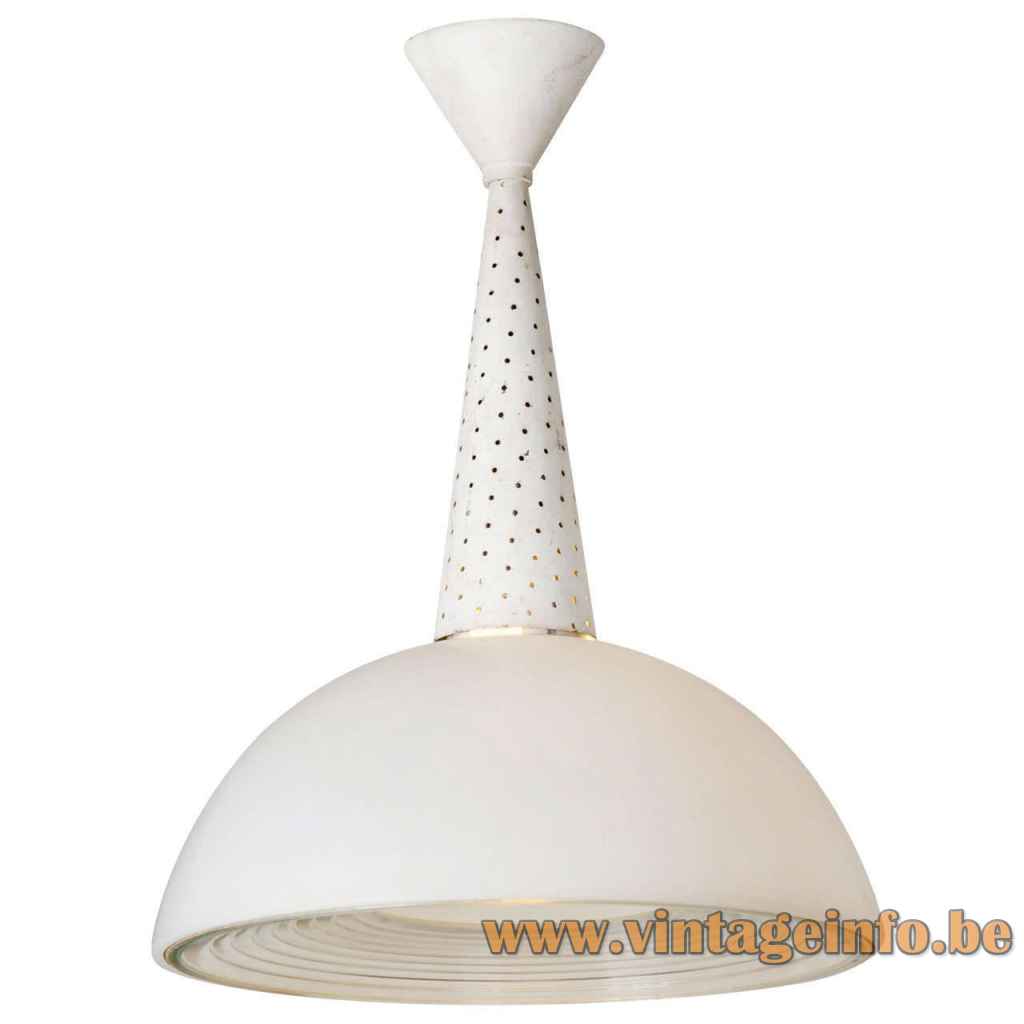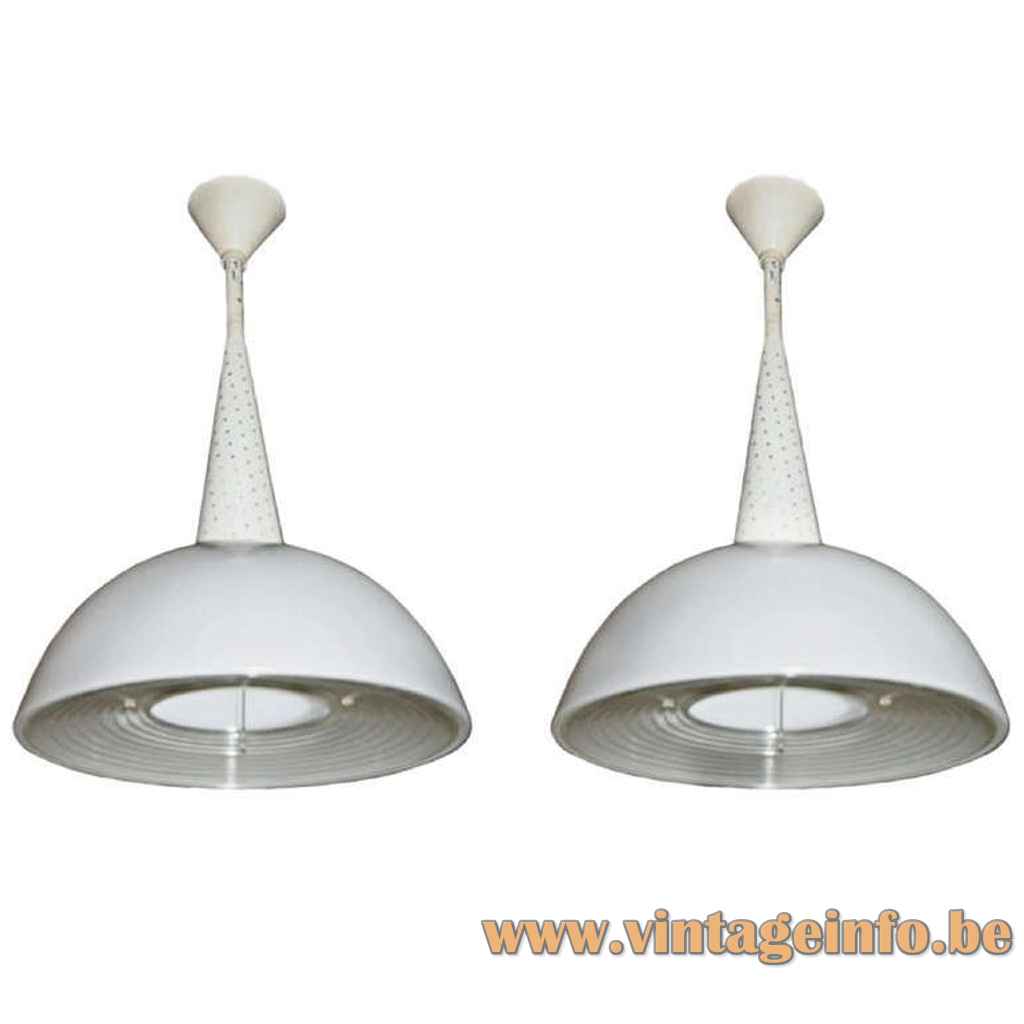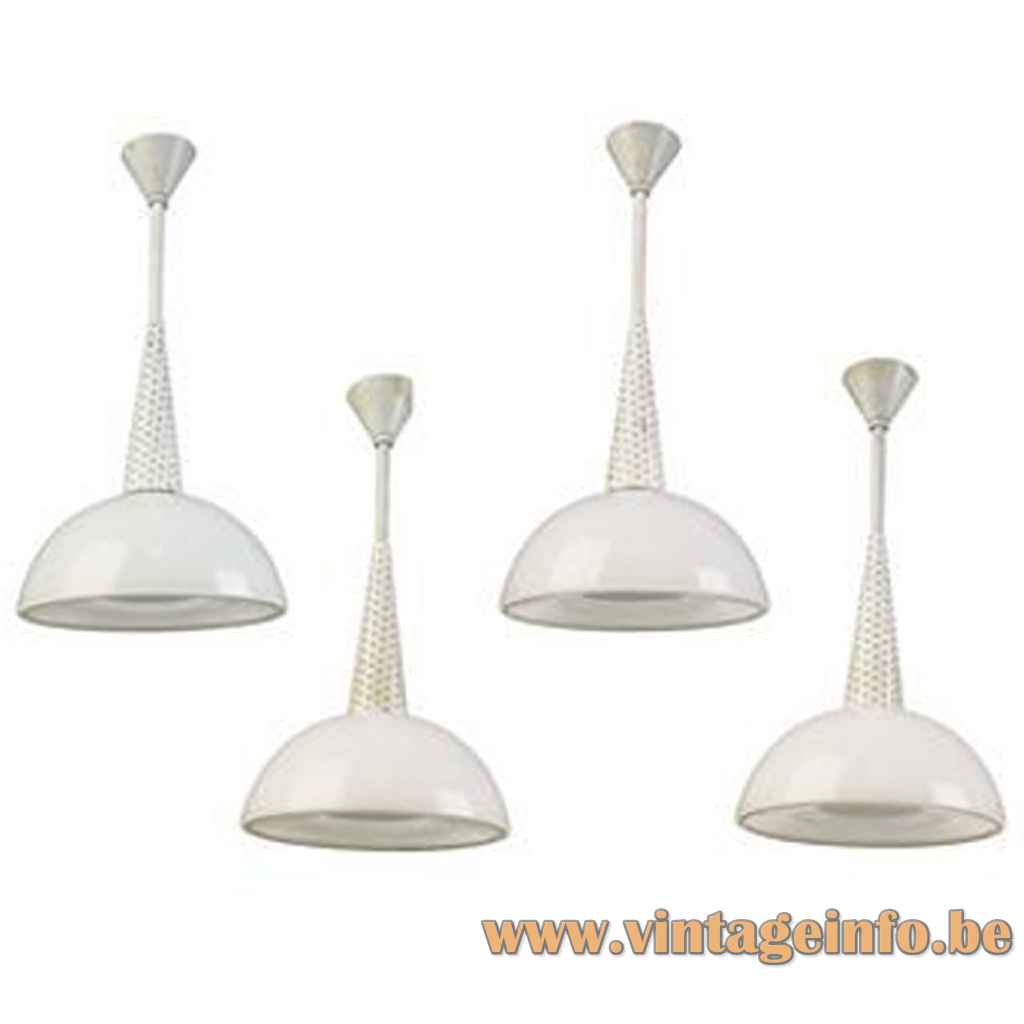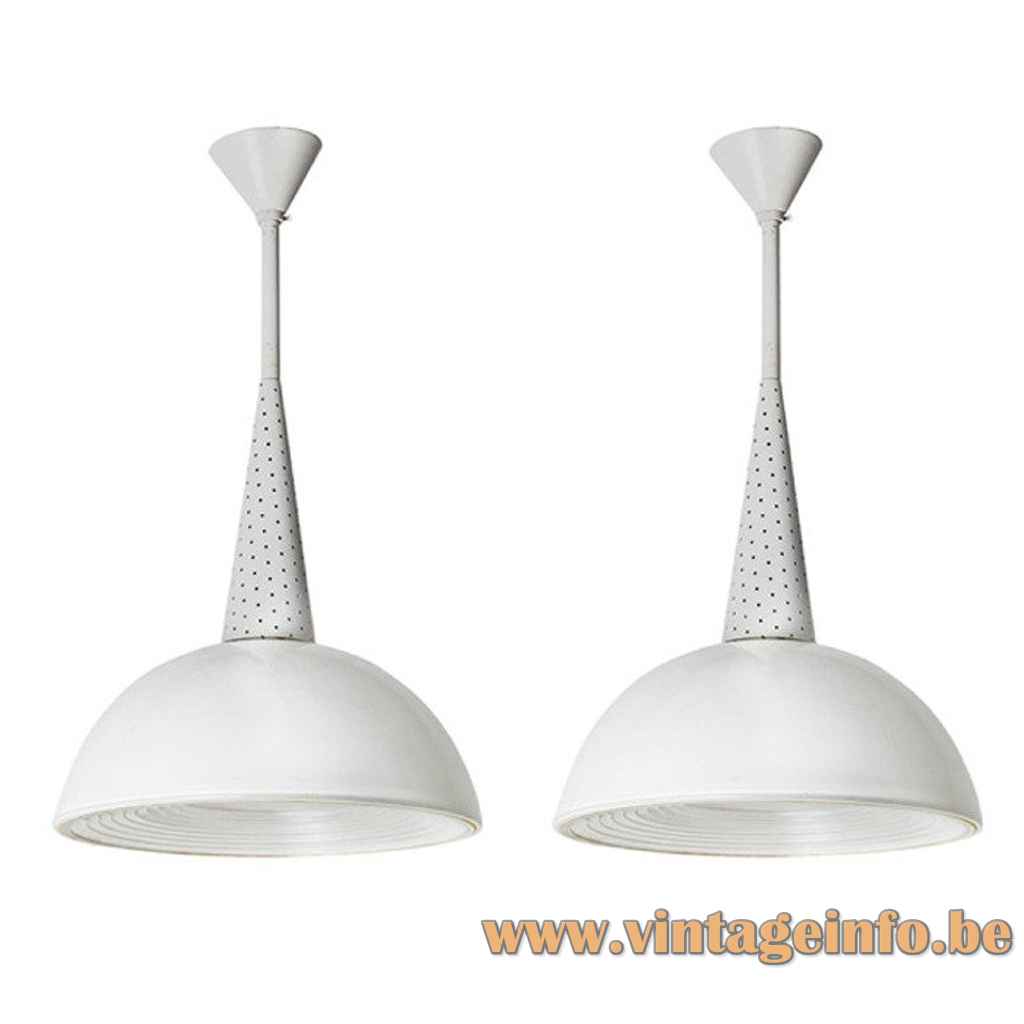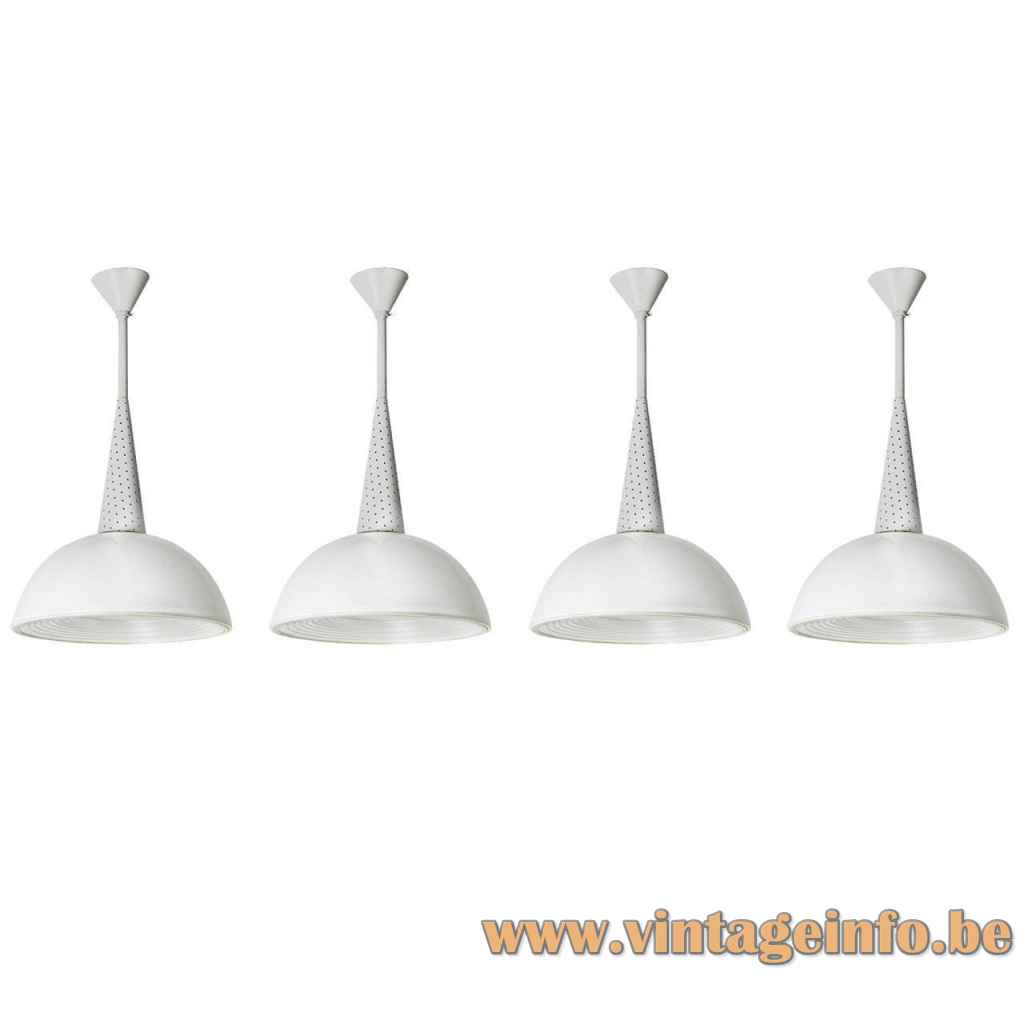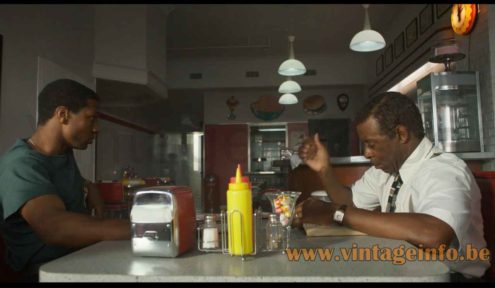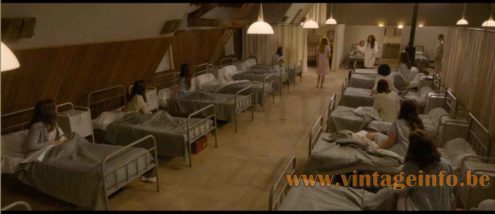Lamps In The Movies
Holophane glass pendant lamps were used as a prop in the 2020 American horror drama television series Lovecraft Country, season 1, episode 1.
Many thanks to Frank from Flowermountain.be for the pictures and the enthusiasm.
Holophane Glass Pendant Lamp
Materials: Half round white aluminium mushroom lampshade. Perforated white painted metal cone on top. Metal rod. Conical aluminium canopy. White glass inside. Glass lens style disc below. Some metal parts. Brass and porcelain E27 socket.
Height: 62 cm / 24.40”
Width: ∅ 36 cm / 14.17”
Electricity: 1 bulb E27, 1 x 100 watt maximum, 110/220 volt.
Any type of light bulb can be used, not a specific one preferred.
Period: 1950s, 1960s – Hollywood Regency.
Designer: To be appraised.
Manufacturer: Holophane Verre Et Lumière, Les Andelys, France.
Other versions: This Holophane glass pendant lamp exists in a few varieties and colours. It was sold with long and short rods.
Mathieu Matégot
The design is of this pendant lamp is often attributed to Mathieu Matégot, because of the perforated cone. But there is no proof for it. It is quickly said that the design is his if there are small holes in it.
Holophane
Augustin Fresnel invents the eponymous lens in 1822. It allows the diffraction of light and the control of light distribution. 70 years later, in 1893, André Blondel invented prismatic glass moulding, based on the principle of the lens Fresnel designed.
The invention is patented under the name “Holophane” whose Greek roots mean “harmonious distribution of light”. An American businessman, Otis Mygatt, purchased the patent in 1898.
Mygatt created two companies for the production and sale of Holophane products, on e company in the United States (Holophane Glass Co) and the other in the United Kingdom (Holophane Limited).
In 1920 Holophane Limited merged with a French manufacturer and created a production site at Les Andelys, a town in between Paris and Rouen. The company is named Holophane SA (Societé Anonyme – Anonimous society).
Holophane produces street lighting, art glass (blown glass under the Verrerie des Hanots brand), optical units for lights and beacons, road signage, headlights, flat lights for cars.
Otis Mygatt sold Holophane SA in 1930 to Comte Exelmans, and became independent.
After the war, the company stopped producing glassware to focus on three major markets: lighting, special glass and the automotive industrie.
In 1989 the company was bought by the UK group EMI Thorn.
The complete history of the Holophane company can be found on their website.
Designs similar to the pressed glass design were also used by Sergio Mazza for his 1960s Gamma and Delta lamps by Artemide. Ignazio Gardella used it for lamps he designed for the Italian company Azucena. Many others companies produced similar glass.
Lamps In The Movies
Holophane glass pendant lamps were used as a prop in the 2020 French comedy film La Bonne Épouse (The Good Wife). Starring Juliette Binoche, Yolande Moreau and Noémie Lvovsky.
Links (external links open in a new window)
La Bonne Épouse (2020) film – Wikipedia
La Bonne Épouse (2020) film – IMDb
Lovecraft Country TV Series (2020) – Wikipedia
Lovecraft Country TV Series (2020) – IMDb
